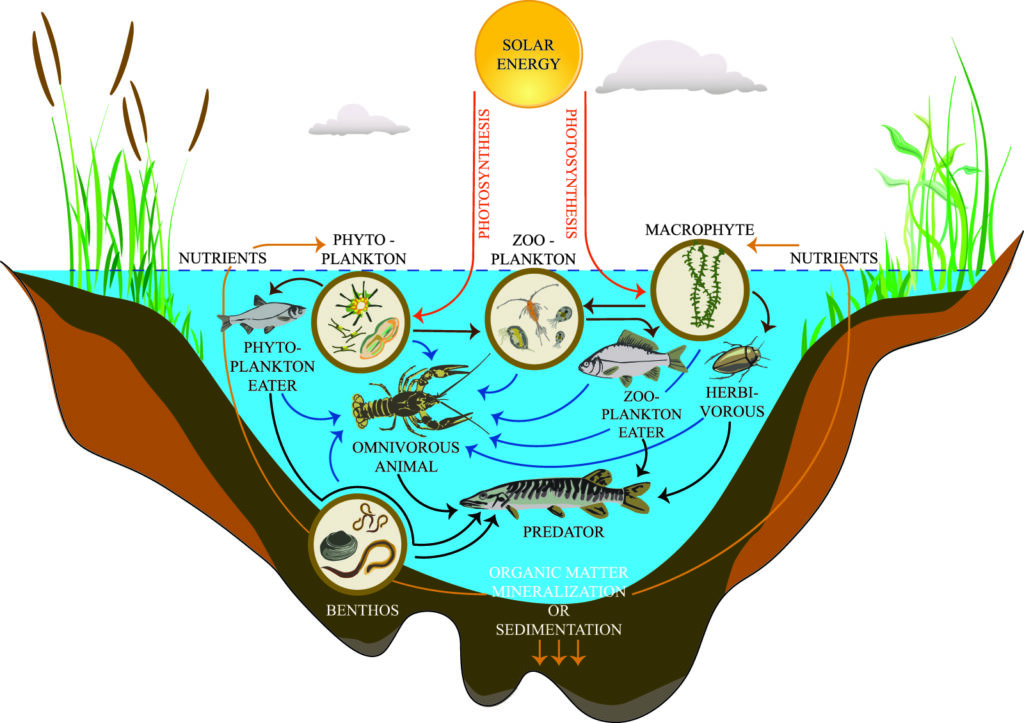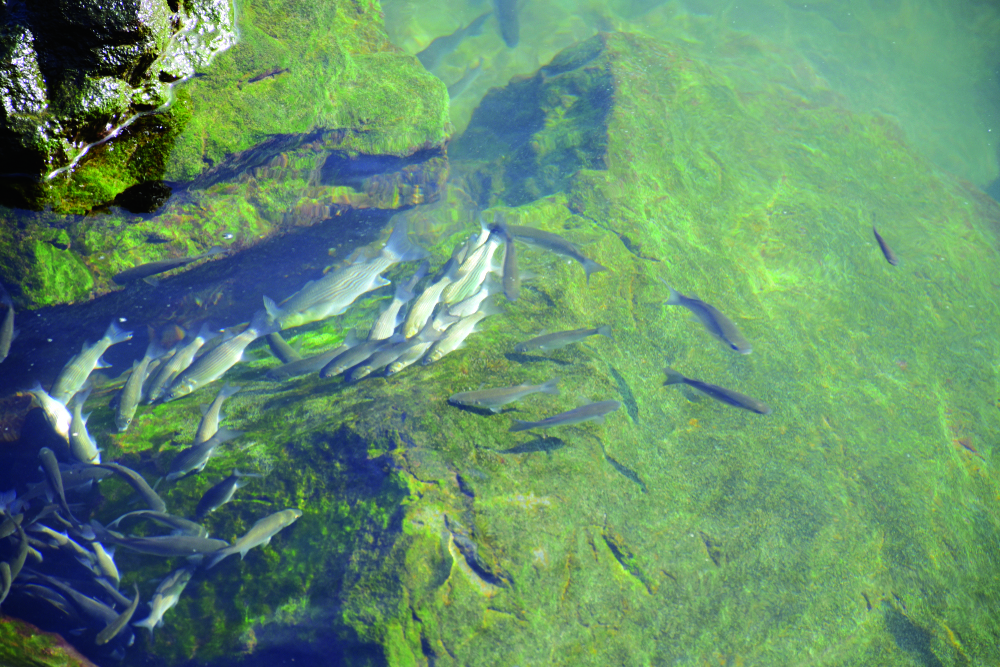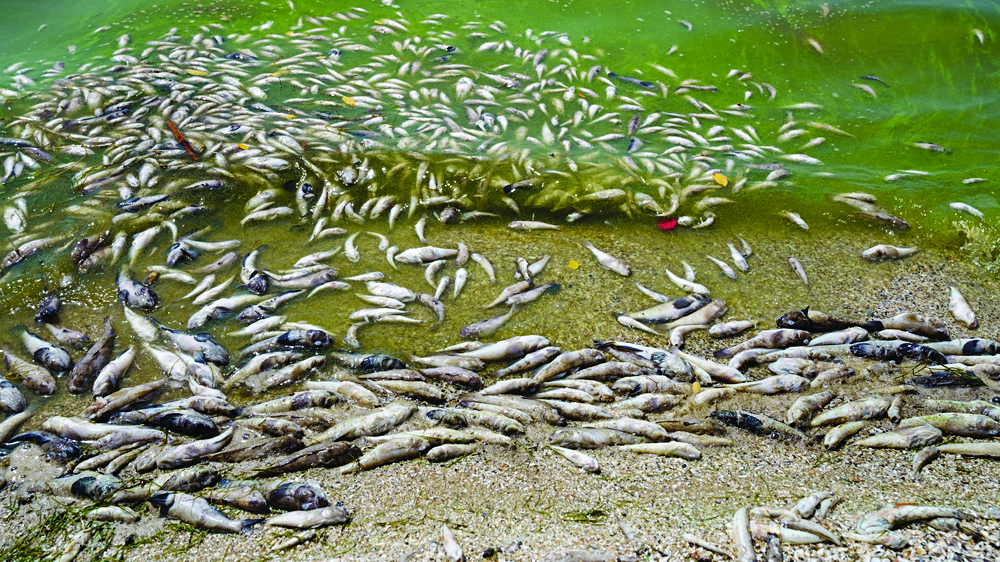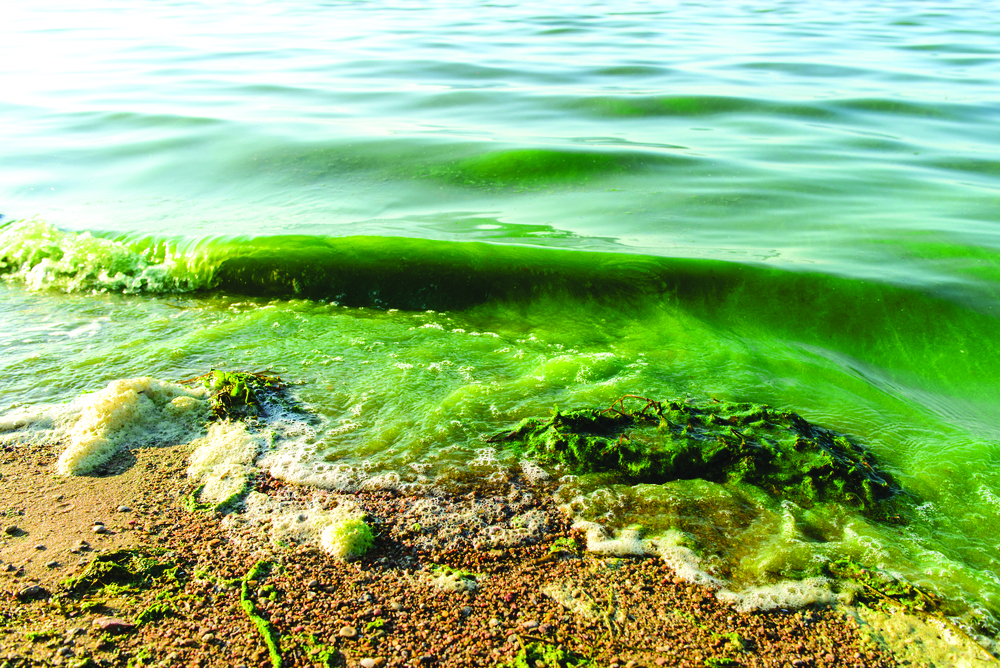For regular beachgoers, you may have experienced finding a large number of sea creatures washing up on shore. And although this may seem like an ominous sign in an apocalyptic movie, it’s actually part of a regular process in the ocean called upwelling.
WHY DOES THIS HAPPEN AND WHAT IS UPWELLING?
Upwelling is a natural occurrence in the ocean where winds flow offshore and into the open sea, sometimes due to rainfall.
In simple terms, when the wind goes above the warm water, it pushes it outward leaving a gap of water where the moved water once was. Because of this gap, cold water from the sea floor gets pushed from the bottom and up toward the surface, bringing with it an abundance of nutrients, minerals, and gasses.

WHAT HAPPENS IN THE WATER?
When nutrient-rich cold water reaches the surface, it becomes a perfect area for plant life to grow. This includes a special creature called phytoplankton.
Phytoplankton are microscopic marine algae that are similar to terrestrial plants in the sense that they contain chlorophyll and mainly rely on nutrients like phosphate, nitrate, and calcium. These marine plants rely on photosynthesizing their food from the sun, making them a perfect food source for other creatures.
Phytoplankton are pretty much at the start of the sea’s food chain: They are the main food source of smaller creatures such as Shrimps, Crabs, Snails, Jellyfishes, and even other tiny Fishes.
The creatures that eat the Phytoplankton then in turn get eaten by larger animals, such as Tunas, Sea Turtles, Halibuts, Squids, and eventually even larger carnivores like Sharks and Dolphins.
These same predators end up passing away and settling at the bottom of the ocean where they too become essential nutrients, ready to be whisked to the surface of the water through upwelling, starting the process once again.

WHERE DO THE DEAD FISHES COME FROM?
When phytoplankton are abundant at the surface of the water, the creatures that consume the marine algae and those predators that eat them all enjoy a sort of feast by the shore.
During this whole ordeal, the upwelling process doesn’t stop. So while the more visible Fishes are enjoying their food, the same cold water that comes from the bottom of the sea floor gets pushed to the surface where those Fishes are.
The immediate cold temperatures stun them, and they end up getting pushed towards the shore. Unfortunately, many of them get stuck and pass away.


SOMETIMES, IT’S TOO MUCH OF A GOOD THING
Having too much algae (algae bloom) and too many marine creatures in one place causes the bioload of that area to reach dangerous levels, similar to how it works in an aquarium.
If there are too many creatures, then there’s not enough dissolved oxygen for everyone, which would cause a dangerous production of toxins into the water.
When the amount of dissolved oxygen becomes very scarce, many of the sea creatures end up choking as a result and they too get washed to shore, especially when they rush to their food in the thousands.

OTHER CAUSES
EARTHQUAKES
It’s also possible that a nearby earthquake might have caused strong waves to violently push thousands of sea creatures to shore.
TOXINS FROM DISTURBED SEDIMENTS
Besides this, it’s also possible that during incidents of upwelling, certain dangerous sediments may become disturbed, which would in turn cause the water quality to become toxic, resulting in more Fish casualties.
UPWELLING IN TAAL
The most recent and noticeable story about upwelling takes place at Taal Lake back in 2019.
According to the Bureau of Fisheries and Aquatic Resources Regional Offices in Calabarzon, due
to the Amihan or Northeast winds that passed through the area, an upwell of sulfur took place, which consequently caused the release of a lethal gas called hydrogen sulfide. This gas ended up poisoning the Fishes in the lake.

(Rabin Fernando-Canuzo)
IS IT A BAD THING?
It’s a yes and no situation. Many of these sea creatures end up dying, which is sad. And then many other animals like Birds, Crabs, and Lizards get the opportunity to grab some easy meals that quite literally landed on their doorstep.
But at the same time, when the number of sea creatures washed ashore are in the thousands, that’ll put a strain on the ecological balance of that area, which could be detrimental in the long run if it happens too often.
NOT ALWAYS UPWELLING
Although upwelling happens naturally, sometimes Fishes getting washed ashore could have other causes, the most notorious of which is pollution or oil spills. Either can end up poisoning the Fishes before they even reach the surface.

HOW CAN WE HELP?
There’s nothing we can do to stop upwelling, since it’s just part of the natural process. Other causes of sea animals being washed ashore can also be from other causes, such as earthquakes or a maximum capacity bioload.
But if there’s one thing we can do to help, it’s to keep our oceans free of plastics, oil, and other harmful chemicals — at least that way, we can do our part to save as much wildlife as possible.






